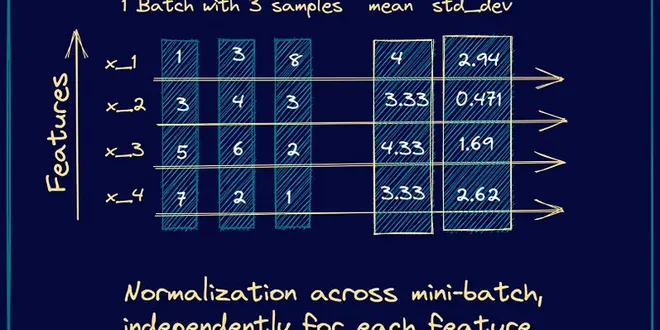Batch Size Effects

What Is the Effect of Batch Size on Model Learning?
And why does it matter Batch Size is one of the most crucial hyperparameters in Machine Learning. It is the hyperparameter that specifies how many samples must be processed before the internal model ...
📚 Read more at Towards AI🔎 Find similar documents

Effect of Batch Size on Training Process and results by Gradient Accumulation
In this experiment, we investigate the effect of batch size and gradient accumulation on training and test accuracy. We investigate the batch size in the context of image classification, taking MNIST…...
📚 Read more at Analytics Vidhya🔎 Find similar documents

Batch Effects
What Are Batch Effects And How To Deal With Them Continue reading on Towards Data Science
📚 Read more at Towards Data Science🔎 Find similar documents

Batch effects are everywhere! Deflategate edition
In my opinion, batch effects are the biggest challenge faced by genomics research, especially in precision medicine. As we point out in this review , they are everywhere among high-throughput experime...
📚 Read more at Simply Statistics🔎 Find similar documents

Why Batch Sizes in Machine Learning Are Often Powers of Two: A Deep Dive
image from the author In the world of machine learning and deep learning, you’ll often encounter batch sizes that are powers of two: 2, 4, 8, 16, 32, 64, and so on. This isn’t just a coincidence or an...
📚 Read more at Towards AI🔎 Find similar documents

Why does Batch Normalization work ?
Why does Batch Normalization work ? Batch Normalization is a widely used technique for faster and stable training of deep neural networks. While the reason for the effectiveness of BatchNorm is said ...
📚 Read more at Towards AI🔎 Find similar documents

A batch too large: finding the batch size that fits on GPUs
A batch too large: Finding the batch size that fits on GPUs A simple function to identify the batch size for your PyTorch model that can fill the GPU memory I am sure many of you had the following pa...
📚 Read more at Towards Data Science🔎 Find similar documents

Why Batch Normalization Matters?
Batch Normalization(BN) has become the-state-of-the-art right from its inception. It enables us to opt for higher learning rates and use sigmoid activation functions even for Deep Neural Networks. It…...
📚 Read more at Towards AI🔎 Find similar documents

Gradient Accumulation: Increase Batch Size Without Explicitly Increasing Batch Size
Under memory constraints, it is always recommended to train the neural network with a small batch size. Despite that, there’s a technique called gradient accumulation, which lets us (logically) increa...
📚 Read more at Daily Dose of Data Science🔎 Find similar documents

Visualizing What Batch Normalization Is and Its Advantages
Introduction Have you, when conducting deep learning projects, ever encountered a situation where the more layers your neural network has, the slower the training becomes? If your answer is YES, then ...
📚 Read more at Towards Data Science🔎 Find similar documents

How to Control the Stability of Training Neural Networks With the Batch Size
Last Updated on August 28, 2020 Neural networks are trained using gradient descent where the estimate of the error used to update the weights is calculated based on a subset of the training dataset. T...
📚 Read more at Machine Learning Mastery🔎 Find similar documents

SyncBatchNorm
Applies Batch Normalization over a N-Dimensional input (a mini-batch of [N-2]D inputs with additional channel dimension) as described in the paper Batch Normalization: Accelerating Deep Network Traini...
📚 Read more at PyTorch documentation🔎 Find similar documents

